A101 BU1387 Rare Reptile withHead Legs & Intact Bones Burmese Amber Myanmar 99mya
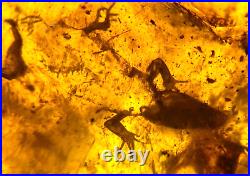
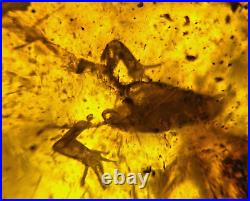
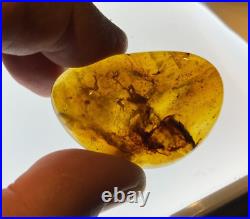
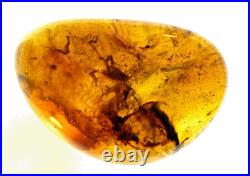
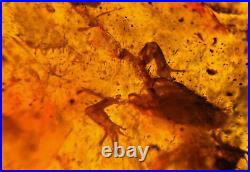
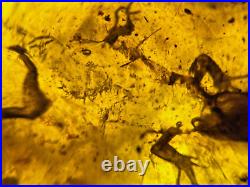
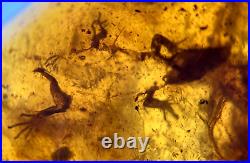
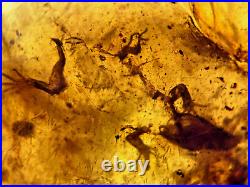
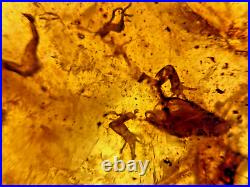



TerraTreasures and Adventures101 offer this authentic Dominican Amber gemstone. Some photos of Burma amber and Burma amber mining Myanmar. Burmese Amber (Burmite) is from northern Myanmar, it is the only Cretaceous amber deposit in the world that is exploited commercially, as well as the first to have been studied scientifically. Burmite is 98.8 million years old and has been used primarily in carvings for at least two millennia by Chinese.
The age of 98.8 million years establishes an earliest Cenomanian age for the fossilized inclusions. The age also indicates that a volcanic eruption occurred at 98.8 million years ago in the vicinity of the Hukawng Valley.
The deposits in the Kachin state of northern Myanmar, are very productive (an estimated 83 tons were exported between 1898 and 1940), and some amber pieces are very large there is a 15 kg stone in the Natural History Museum in London and recently recovered pieces are larger. The color of Burmese amber stones vary from a transparent yellow to a highly desirable deep red, the amber resists fracturing, is relatively hard (1.2 times harder than Baltic amber), and it receives a beautiful glassy polish.
Burmite mining lapsed from just before the independence of Burma from Britain in 1947, and did not resume until the late 1990s. The greatest value of burmite, however is scientific.
We have been collecting amber in the field and prepping rough fossil amber specimens since 1993. Photographs of our specimens have appeared in National Geographic, Nature, Science, Scientific American, Discover, Time, Newsweek, The New York Times and others.
We have been featured in BBC's production, PaleoWorld's The Amber Hunters. We offer authentic museum quality Dominican and Burmese (Burmite) Amber display specimens Dominican Republic where we have chiseled beautiful amber gemstones out of the lignite layers deep in the amber mines north of Santiago. We have excavated in the Palo Quemado and Los CaCaos blue amber mines and also in La Nueva Toca and the world famous La Toca amber mines way up in the mountains north of Santiago. For many years we have extensively collected mid Cretaceous New Jersey amber in the Raritan formation of central New Jersey and have traveled many times to collect late Cretaceous and early Paleocene amber in the Hanna formation of eastern Wyoming. Some of our collecting trips have been in October of 2003 to the western Aleutian Islands some 1000 miles west of Anchorage to explore and collect Miocene amber, August of 2004 and April of 2006 we were back in the Dominican Republic to collect Miocene amber from the Palo Quemado amber mines which have recently closed due to the miners finding little amber, we were back to the Dominican Republic in April of 2006 to video in the La Toca amber mines, and in August of 2007 we excavated in La Toca and La Bucara.
We've collected Eocene amber in western Indian in the Cambay amber formation. We've done excavations in the Dominican Republic in 2012, 2014, and 2016.We did 2 collecting trips to a Eocene amber deposit in the southern United States in 2017 and in late summer 2018 we revisited a historic amber site in the south east that we've collected at in the 1990's. We were at the 8th International Conference on Fossil Insects, Arthropods & Amber in Santo Domingo Dominican Republic in April 2019 where there were many amber/insect researchers from all over the world there and some gave fantastic talks on fossil insects and amber - great stuff! We were last back in the Dominican Republic in September 2019 before the pandemic at the Los CaCaos and La Cumbre amber mines. We have many trips coming up despite the pandemic restrictions. We have donated many hundreds of amber specimens to museums in the United States and have several dozen new species of insects in amber named after us.
We have examined several thousand specimens of rough Burmese amber and have prepped many new Burmese fossil amber specimens. We have traveled to Europe with colleagues to examine unusual spectacular Dominican Amber specimens in private collections and we consider the amber curators of the museums in Santo Domingo, Puerto Plata and New York City our friends.
Exploring for and collecting amber along with the examination and research of amber is our passion.